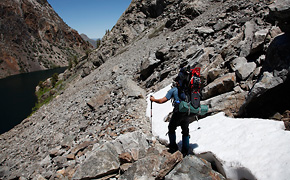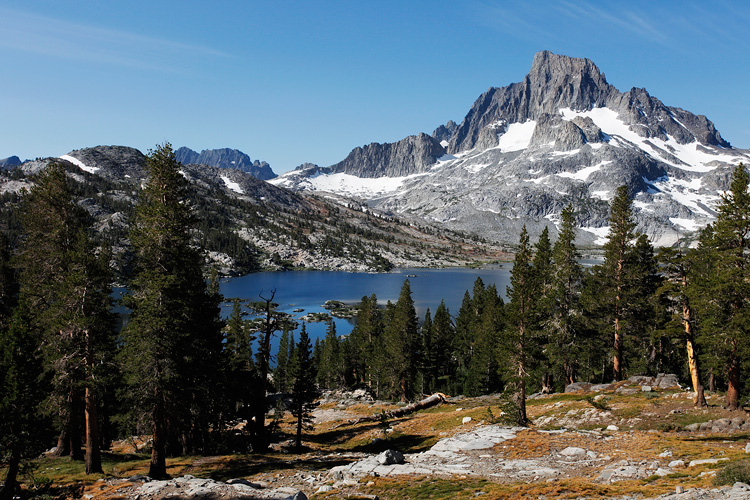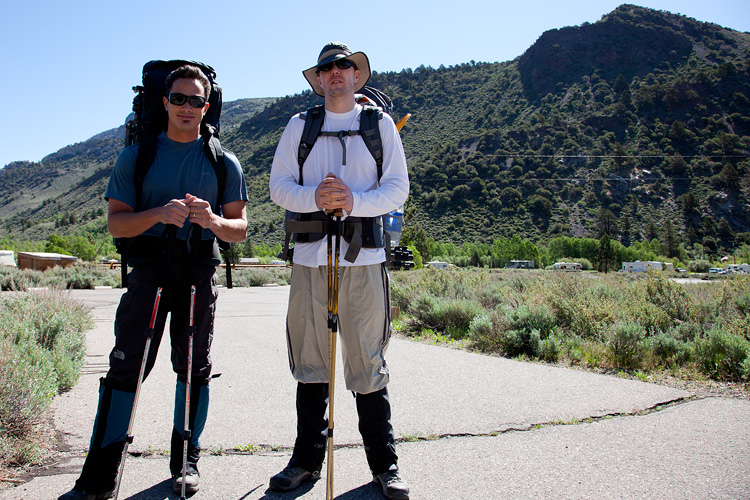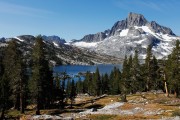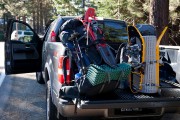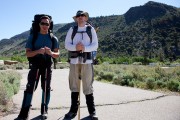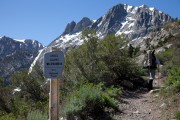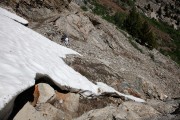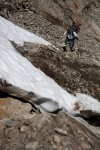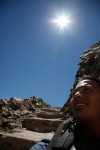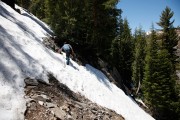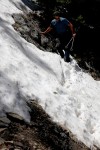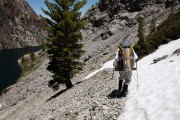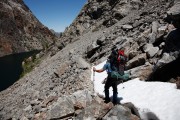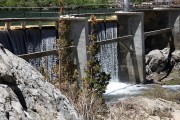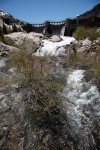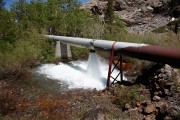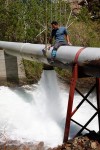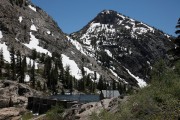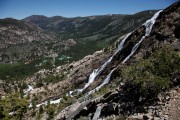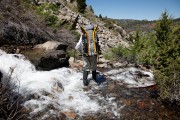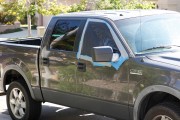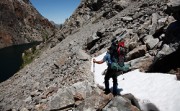Last week, Scott and I decided to make an impromptu backpack trip to the Mammoth High Country. The record snowfall last winter presented some logistical challenges, however. Originally, we planned to drive to Mammoth and then take the Reds Meadow Shuttle to Agnew Meadow, where we would pick up the easy trail to Thousand Island Lake.
The day before we were scheduled to leave, I learned that the shuttle’s opening day would be delayed due to excessive snow and rockfall – we would need to find an alternate entry. I consulted my TOPO! software and found another route that looked good. We would drive the June Lake Loop and park at Silver Lake. The Rush Creek Trail climbs out of a horseshoe-shaped valley and quickly ascends to 10,000 feet at Agnew Pass, reaching Thousand Island Lake after a relatively easy 6 mile hike. Perfect!
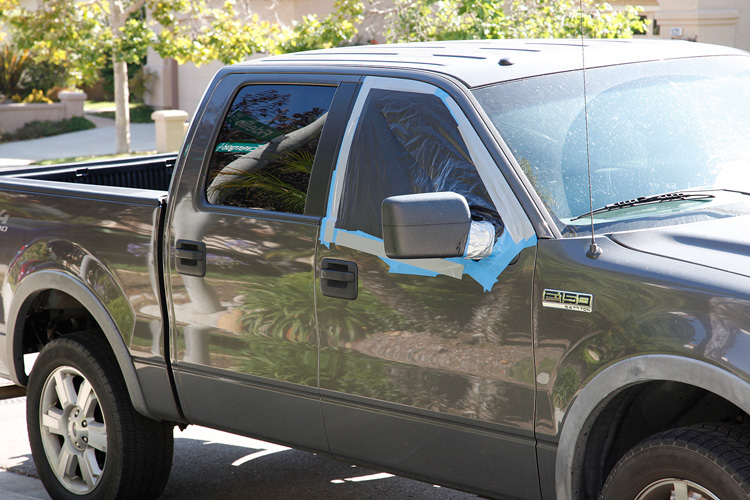
Perhaps it was an omen, but on the way home from work, my passenger-side window stopped working. I was lowering the windows to get some air, and the window jammed with a horrible crunching sound. A few miles later, it outright fell and disappeared into the door. Wonderful timing. I hastily taped it up using some heavy plastic sheet and hoped for the best. Scott and I were forced to shout at each other during the drive up to Mammoth. We arrived in the evening and ate a tasty meal at Angel’s. I recounted the story of Lopez and the Hot ‘n Gooey, from a trip in 2003.
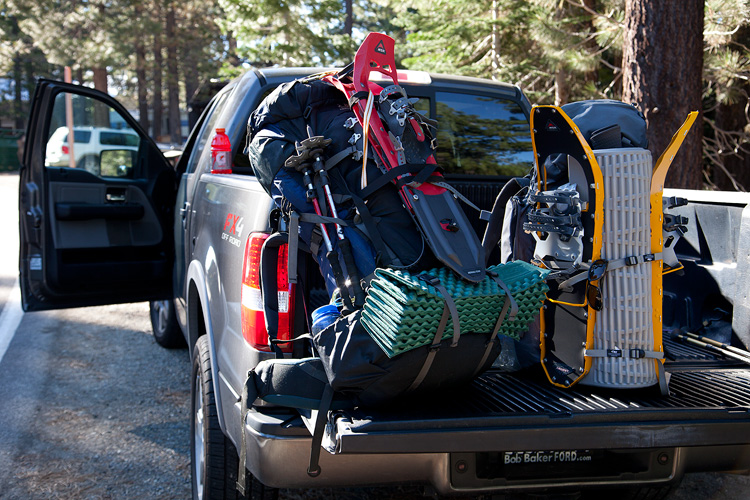
We picked up our permit the next morning, and hit the trail at 10 am. I didn’t pack any mosquito repellant, and came to regret this decision within minutes of leaving the parking lot. After a mile of easy hiking, I was already feeling winded from all the furious arm swinging and frenetic swatting.
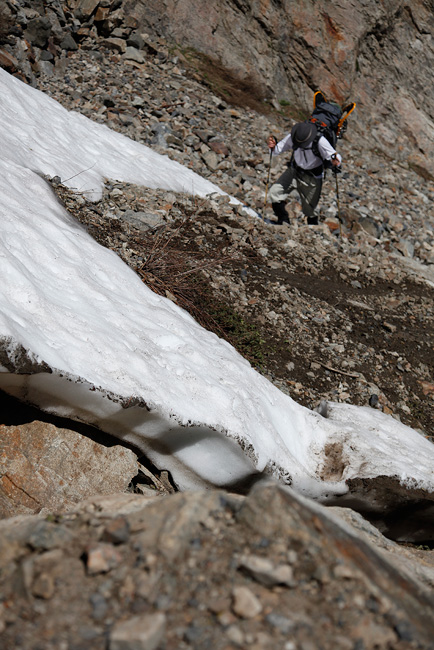
The ranger told us that we would probably need snowshoes once we got into the high country, so we brought them along. He said that a cross-country skier had been up the trail a couple of weeks earlier, and that he had gotten as far as Gem Lake the previous week. “It will be interesting” were his exact words.
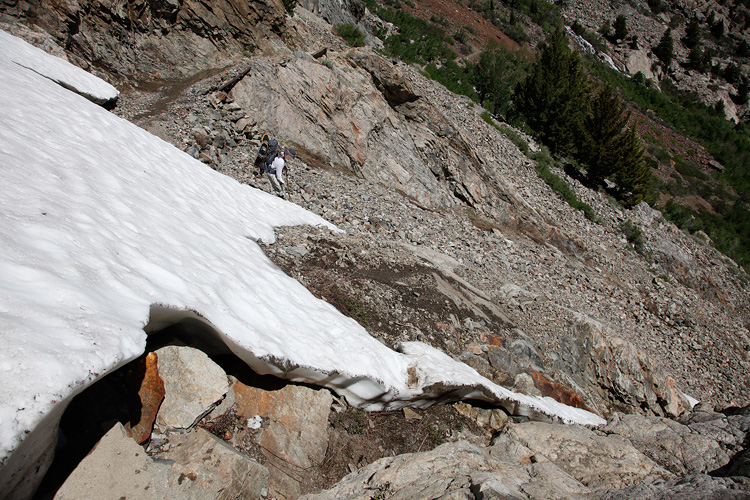
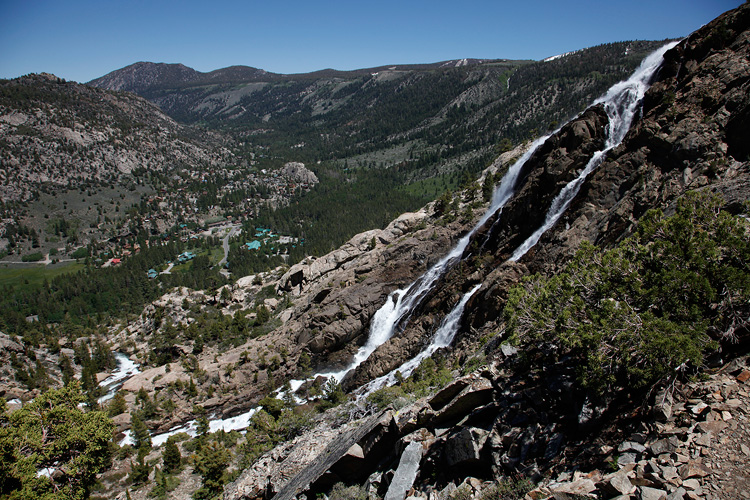
The amount of water flowing down the canyon was impressive; I’ve never seen anything like it in the Sierra. Legitimate waterfalls were steaming down the sides of the mountain. I started to worry that these stream crossings would involve swimming. Water was flowing over the spillway at Agnew Lake, and one of the drain aqueducts (3 feet in diameter) was shooting a crazy amount of water down onto the ground – it looked like some sort of blow-off valve to prevent damage to the pipes. I’m pretty sure it was strong enough to kill a person, so, of course, I decided to climb on top for a photo op.
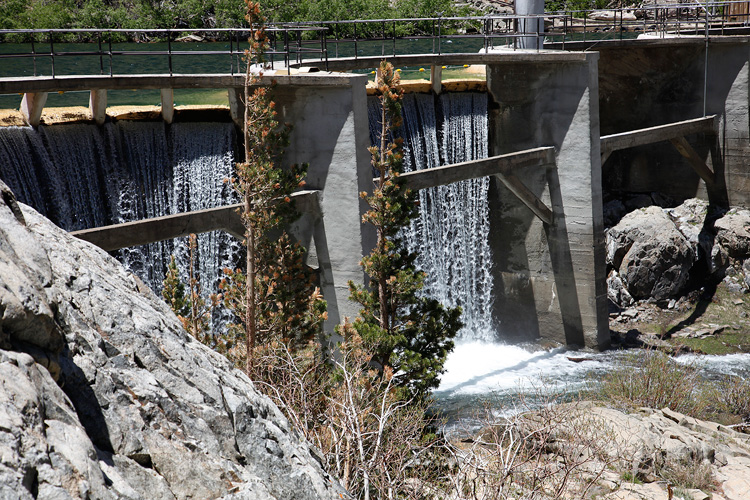
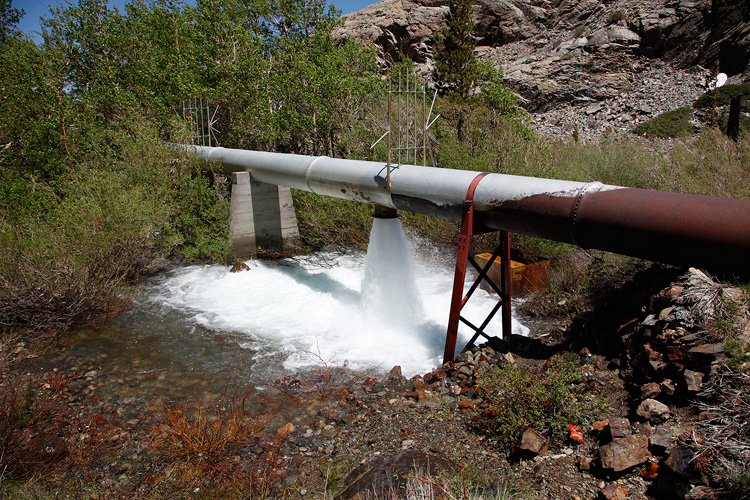
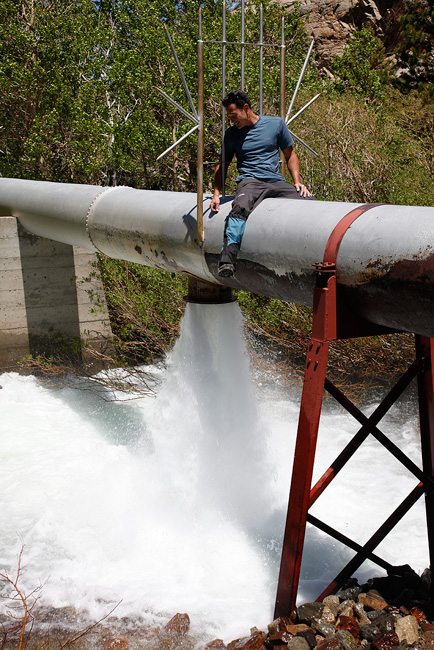
We were hiking along the north shore of Agnew Lake when Scott asked me, “Are you sure we’re going the right way?” We could see a trail on the other side of the lake, and sure enough, we had taken a wrong turn at the junction. A few minutes later, we were back on the trail and headed in the correct direction. From the outlet of Agnew Lake, we could see the steep slope that would eventually lead us to Agnew Pass. Large patches of snow here and there, but it was a warm day and kicking steps shouldn’t be a problem.
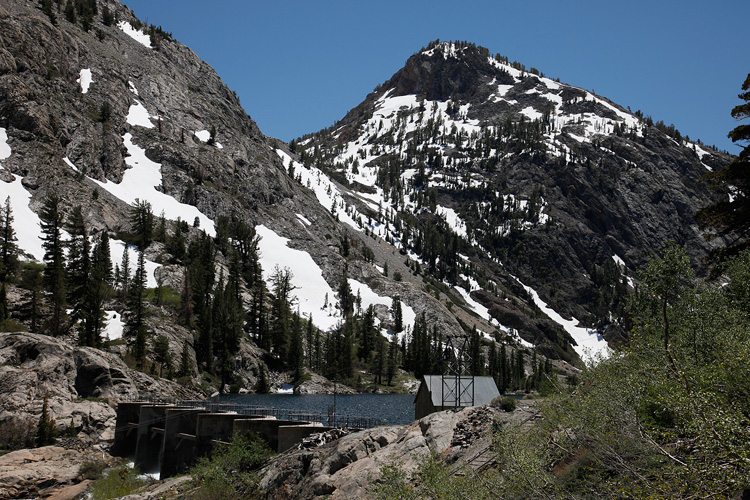
The trail was in poor condition, having been buried under several feet of snow a week or two earlier. Some sections were strewn with fresh rockfall, and water was running down other parts. I got off-route a few times – at one point finding myself in some 3rd class terrain with a 50 lb. pack on my back. Rather than try and down climb to meet back up with Scott (who was negotiating his way around the lake by skirting the shore), I retraced my steps and crashed through a thicket of shrubs to regain the trail.
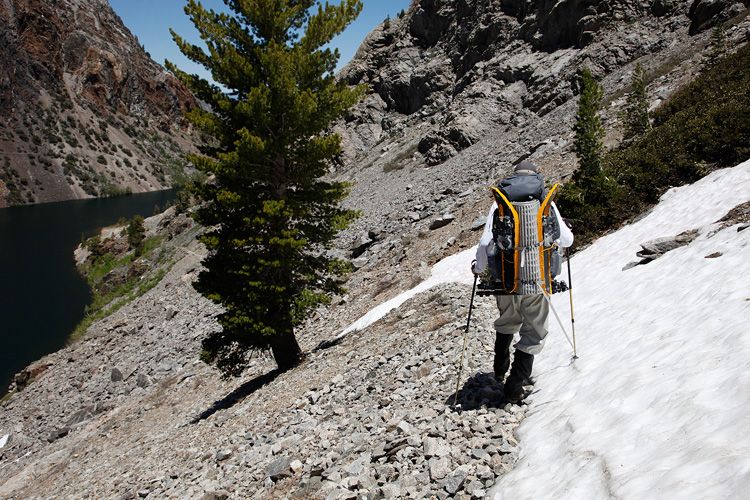
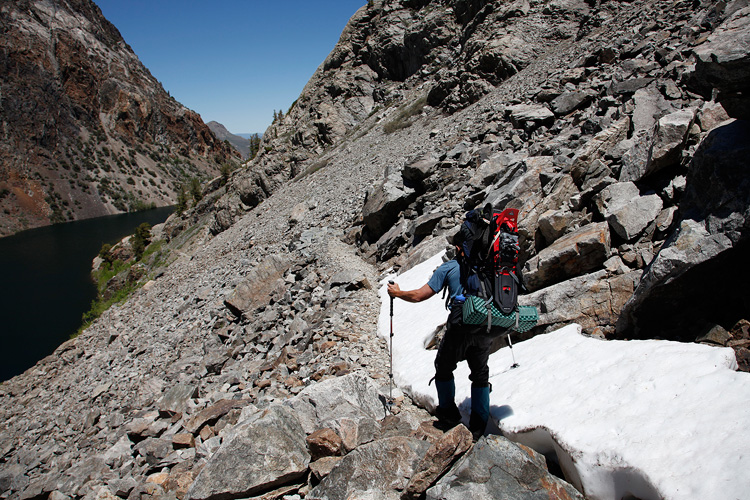
We were about 2.5 miles into our hike by this point, and nearing 9,000 feet of elevation. Thus far, the hike had been relatively easy, minor route-finding errors aside. The weather was warm and the snow was soft, and I never felt as if the footing was insecure. I can’t say the same for Scott, who was much less enthusiastic about traversing the snowy sections. We reached the south end of the lake, and just as the trail began to switchback up the steepest section, it vanished under the snow completely. We would have to kick steps to make slow, methodical progress the final 1/4 mile to the top of the saddle.
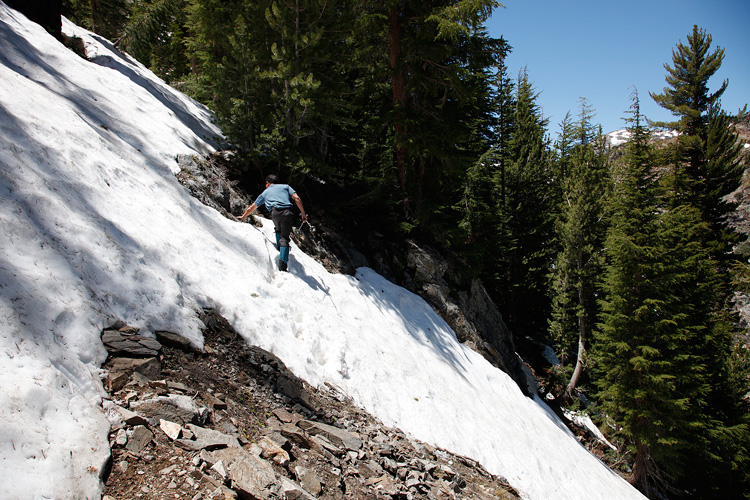
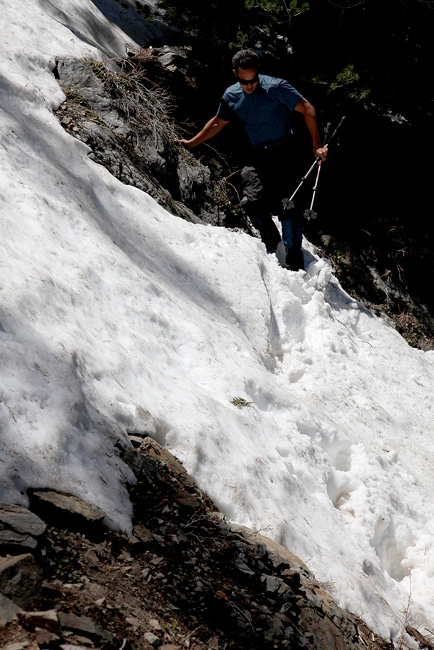
I removed my pack and headed up a little farther, to investigate the best approach. Without a trail to follow, we would need to find the path of least resistance that offered the most security. There was no real exposure here, but the slope was angled steeply enough that a slip might turn into an uncomfortable 30′ slide. With our heavy packs, it would definitely be difficult. An alternative would involve scrambling up the loose scree and zig-zagging our way up the slope above, but Scott wasn’t thrilled with that idea, either. I didn’t want to give up after coming all this way, but we came as a team and I knew that the conditions might be a deal-breaker. We discussed our options and decided to return to the trailhead.
A few hours later, we were driving along Tioga Pass through Yosemite, which was also a flooded mess. Tenaya Lake, which had been frozen over the week prior, was nearly at the level of the road. Small waterfalls were spilling over onto the highway and portions of Tuolumne Meadows looked like a shallow lake. Our backup plan was a hike into Cathedral Lakes, but the conditions didn’t look appealing at all. The clear, blue skies sapped our enthusiasm for other Eastern Sierra hotspots like the Alabama Hills or the White Mountains, and feeling tired and disappointed, we decided to make haste back to San Diego. I climbed into bed at 2:30 am, after 5 hours of hiking and 10 hours of driving. I slept well.
Photo gallery below – same pictures as above, but bigger versions.

